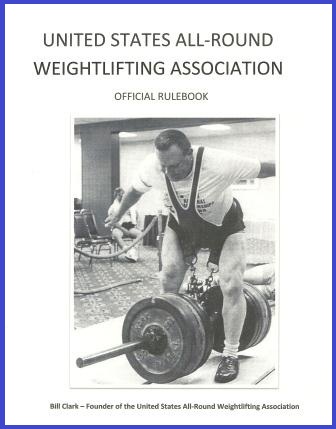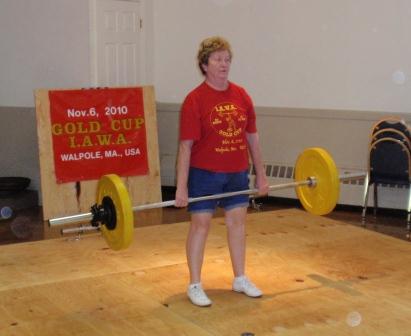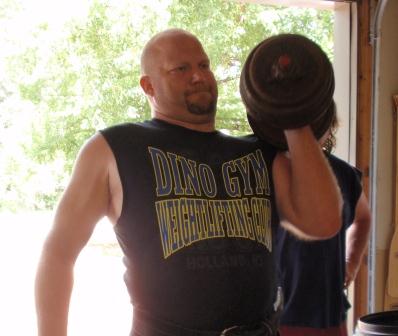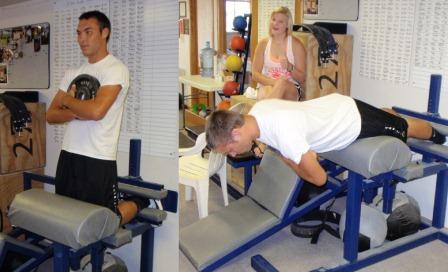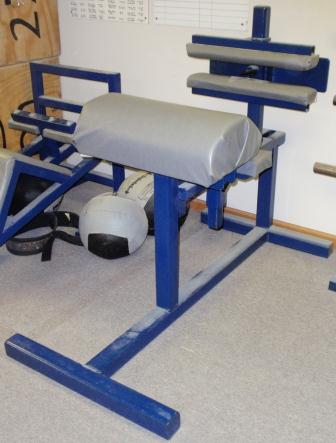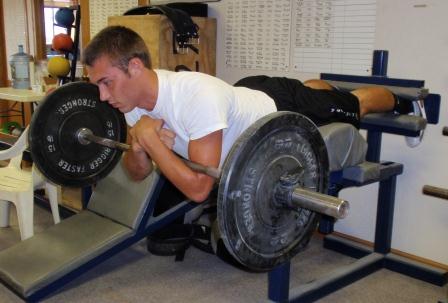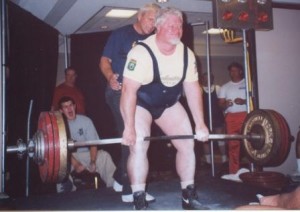
Bobby Dodd doing his favorite lift, the deadlift
by Thom Van Vleck
Bobby Dodd has been a friend of mine for many years. Al Myers has known Bobby even longer, throwing with him in the late 80’s. Bobby has been a friend of all strength sports since I have known him. I know for a fact if he lived near some all rounders he’d take a keen interest in the USAWA. I wanted to give the guy some credit for his amazing career in strength sports.
Bobby Dodd is a legend in Highland Games Athletics in the United States. Not only as an athlete, though he has competed in probably more states in the U.S. and provinces in Canada than any other thrower ever, but as a true friend to the sport. This has all been done with his usual quiet reserve letting his actions speak for him over words. His contributions rival any other and I thought it was time he was recognized for his impact.
Bobby Dodd’s involvement in Scottish Highland Games Athletics has spanned over 40 years. His parents were born in Scotland and he was exposed the Highland Games at an early age. He told me that when he was getting out of the Navy he made a “to do” list and turning a caber was in the top ten. This led to his first foray into competition was in 1969 at the Santa Monica Highland Games where he walked on for a caber only event and he found himself hooked on the sport. He realized right away he needed to get stronger and this led to his powerlifting career.
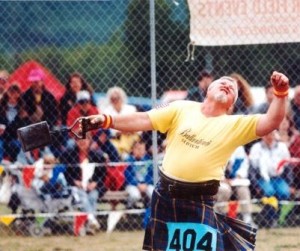
Bobby Dodd throwing in the Scottish Highland Games
The real reason that I wanted to write this story is to convey what a sportsman Bobby is and his valuable contribution to the sport he loves. His influence goes beyond competition, judging, or the equipment he sells. He has made many friends, brought so many into the sport he loves, but most importantly has set a standard of sportsmanship for all who have followed that has become part of why many enjoy the competitions today. Some simply show up and compete and enjoy the fruits of the hard work put into making things happen. Others work hard to make it happen. Bobby has done it all!
Bobby began competing in Scottish Athletics in 1980. His favorite event was the hammer throw. But he found equipment hard to come by. As a result, he contacted a local foundry about making some hammer heads for his personal use. The expense was in making the mold and once the mold was made it was a cheaper process to make more, so Bobby started selling them to recoup the cost of the mold. Eventually, this led to the development of Mjolnir hammers and a complete line of throwing weights for distance and height for the Games. This endeavor was called “Hevy Gear”. Bobby has had his equipment used at well over 100 highland Games in North America, and even Iceland and New Zealand.
Bobby, like many of us, first started giving back to the sport by judging. He first judged in 1984. He did this off and on for many years and became an SAAA certified judge in 1997. Since that time Bobby has judged at the Pro World Championships, Women’s World championships, Masters World Championships, North American Championships and numerous other Games from the local and regional level.
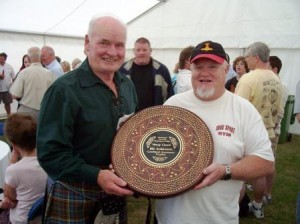
Bill Anderson (r) is one of the greatest Highland Games throwers of all time and maybe the greatest hammer thrower of all time. Bobby (l) sponsored the combined Scottish Hammers trophy for the Masters World Championships and named it after Bill. This was taken a the Masters World Championships in Scotland.
In 2004, I traveled to compete in my first Masters World Championships. When we arrived, there was a mix up on judges and we were short. Since many of the athletes there were also certified judges or had years of experience, they asked for volunteers. I recall thinking I had travelled half way across the country and didn’t want to miss out on the competition, but Bobby, who was there to compete, offered to judge. He sacrificed so others could throw! I’ll never forget that and it’s just one example of how Bobby has given back to the sport that has given him so much.
I have another more personal connection with Bobby. That is being a United States Marine. Bobby was in the Navy and often having a military service connection makes for close friendships. It has not escaped my notice that Bobby wears the Marine Corp tartan proudly and supports servicemen and women whenever he can.
Bill Scruggs, one of the founding members of the Masters World Championships in Highland Games, told me that Bobby was very supportive in the early days of the MWC. Bobby not only donated hammers to be used, he developed the Master’s Hammer Aggregate trophy. It was a traveling trophy awarded based on the aggregate of both heavy and light hammers thrown in the MWC. While this award is no longer contested, it led to the current aggregate system used in the MWC to determine the best overall hammer thrower, weight for distance thrower, and stone putter. Bobby has sponsored many other awards to further the sport.
Ryan Vierra, multi Pro World Champion in Scottish Highland Games, said:
“I consider Bobby Dodd one of the most influential people of our sport, past and present. Bobby has provided his valuable time to consult with games, and countless hours judging, as well as providing games all over the world with standardized equipment. When I started the games in 1987 Bobby was one of the athletes that welcomed me into the sport and I consider him a great friend and key asset to the future of our sport.”
Sean Betz, 2008 Pro World Highland Games Champ said:
“ Bobby is a great guy who always is in tune of what’s going on in the sport of highland games. He takes a lot of pride is his equipment. One of things I will always remember about Bobby is how he e-mailed me about his deadlift program. Bobby had just been getting done with cancer treatment and is getting up there in age. I was shocked as he is still up in the 400lb range for deadlifts and was very serious about increasing it. A true highland games warrior and a great heart for the sport and for people.”
I competed at the North American Championships near Seattle, Washington in 2010 and Bobby was a judge there. After the games were over, we enjoyed a libation together and talked about our love for the sport. Bobby pulled out a huge scrap book. I expected that it would be full of his own exploits, but instead it had dozens, maybe hundreds, of newspaper clippings of some the greatest ever to turn a caber! He called it his “History of the Highland Games” and it’s a work in progress.
I was speaking with Steve Conway, the Athletic Director of the Caledonian Club of San Francisco Highland Games (one of the oldest and biggest Games in North America) about Bobby. Steve talked about throwing with Bobby and Mike Qutermous starting in the early 80’s and the fun they had. He also pointed out how the CCSF Games had used Dodd’s equipment for years and wondered out loud how many world records and games records had been set with Bobby’s equipment. Steve also pointed out that Bobby often donated awards and equipment and donated women’s weights often just to get a Games to add women’s events!
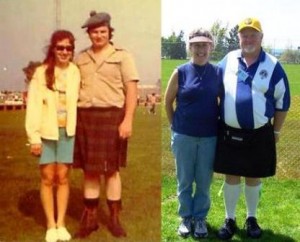
Two photos, both of Cindy and Bobby Dodd. One in 1971 and the other in 2009. Over 40 years of Highland Games attendance!
Whenever Bobby Dodd’s name was mentioned, I heard words like “friend”, “mainstay”, “heart” and “influential”. Sometimes those that do the most aren’t recognized for their efforts. Bobby Dodd one of those guys. It would be my hope to be more like Bobby. I want to give back more than I take from the sport I love, make lots of friends, and have a lot of fun in the process.
